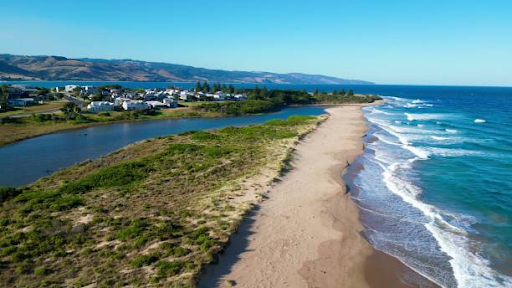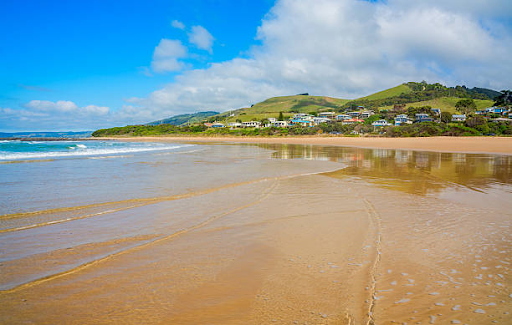Comprehensive Guide to the Great Ocean Road Trip | Itinerary & Tips
Are you planning an unforgettable Great Ocean Road trip? This epic scenic route offers some of Australia’s most stunning coastal views, weaving through picturesque towns and past iconic landmarks. In this article, we’ll provide you with comprehensive directions, tips and insights for your adventure along the Great Ocean Road, ensuring you make the most of every turn. From where to start your journey to what you should pack and where you should stop, we’ve got you covered for the road trip of a lifetime.
Preparing for Your Journey Along the Great Ocean Road
Mapping Your Route – Key Starting Points
Before setting off on your Great Ocean Road trip, it’s crucial to map out your route. Starting from Melbourne, you’ll head southwest towards Geelong and the Surf Coast, which marks the beginning of your coastal journey. Alternatively, if you’re coming from Adelaide, you can experience the route in reverse, which offers a different perspective. No matter your starting point, ensure your map includes all the must-visit spots you wish to explore.

From Melbourne to the Surf Coast
If you choose to begin your journey from Melbourne, the Surf Coast is your first major stop. This area is renowned for its surfing heritage and marks the official start of the Great Ocean Road. Plan for about a 1.5-hour drive from Melbourne to Torquay, the gateway to the Surf Coast, where you can witness some of Australia’s most famous surf beaches including Bells Beach.
From Adelaide: The Reverse Adventure
Embarking on the Great Ocean Road trip from Adelaide entails a longer initial drive, but presents the route from a different angle. Travelling from Adelaide to the iconic Twelve Apostles takes approximately eight hours, after which you can proceed eastward, exploring the Shipwreck Coast and beyond.
What to Pack for the Trip
Packing the right items for your road trip can make all the difference. Key essentials include comfortable clothing, snacks and water, a first aid kit, and reliable navigation tools. Don’t forget to pack a camera to capture the breathtaking views, and if you plan to hike, appropriate footwear is a must.
The Journey Begins – Starting Your Great Ocean Road Adventure
As you leave Melbourne, follow the signs for the M1 towards Geelong. This will be your initial stretch before the scenery transitions to coastal views. Upon approaching Geelong, take the exit towards the Great Ocean Road and Torquay. This leg of the journey is straightforward and a great introduction to your coastal exploration.
Milestones to Look Out For
On the way to Torquay, keep an eye out for the following milestones:
- The exit for the B100 – the official route designation for the Great Ocean Road.
- The Arch – an artistic structure signaling your arrival on the Great Ocean Road.
- The sign for Bells Beach – a fitting detour for surf enthusiasts.
Key Stops and Landmarks Along the Great Ocean Road
The Great Ocean Road is punctuated with charming coastal towns each offering unique experiences. Lorne is a popular stop with its vibrant arts community, cafes, and the nearby Erskine Falls. Apollo Bay serves as a great base to explore the lush Otways and its waterfalls.
Lorne – A Seaside Gem
Lorne is a delightful seaside town where you can swim, relax on the beach, and enjoy local seafood. It also plays host to the annual Lorne Sculpture Biennale, making it a cultural stop on your road trip.
Apollo Bay – The Heart of the Otways
Apollo Bay offers opportunities for kayaking, fishing, and indulging in regional culinary delights. It’s also a gateway to the ancient rainforests of the Great Otway National Park, a stark contrast to the coastal scenery.
Majestic Viewpoints and Scenic Photo Ops
The route is dotted with numerous viewpoints, each offering its own panoramic views. No trip would be complete without seeing the Twelve Apostles and Loch Ard Gorge, both highlights of the Port Campbell National Park.
The Twelve Apostles – A Must-See Marvel
The Twelve Apostles are iconic limestone stacks that rise majestically from the Southern Ocean. Despite their name, only eight remain, but they still present an awe-inspiring sight especially at sunrise or sunset.
Loch Ard Gorge – History Carved by the Sea
Named after a ship that wrecked nearby, Loch Ard Gorge is rich in history. With its clear blue waters and towering cliffs, it’s a perfect spot for photographers and history buffs alike.
Safe Travels – Maneuvering the Tight Turns and Coastal Roads
Driving Tips for the Great Ocean Road
The Great Ocean Road can be challenging with its winding roads and variable weather conditions. To drive safely, keep to the speed limits, stay on the left side, and take breaks to avoid fatigue. Be prepared for any sudden changes in weather by packing layers and keeping headlights on during rain or fog.
Dealing with the Elements
Whether it’s bright sunshine or coastal mist, the elements can be unpredictable. Always keep sunglasses and sunscreen on hand for sunnier days and a rain jacket for the unexpected showers.
Timing Your Drive – Avoiding Peak Hours
Schedule your drive to avoid the crowds, especially during peak tourist season. Start early in the morning or later in the afternoon to enjoy quieter roads and take in the scenic beauty at your own pace.
Finishing Your Trip – Beyond the Road’s End
Completing the Journey – Off the Beaten Track
Once you reach the end of the Great Ocean Road, consider exploring some lesser-known attractions. The region offers everything from hidden beaches to rainforest walks. Extend your adventure by traveling off the main route where many more discoveries await.
The Lesser-Known Wonders Beyond the Apostles
Past the Twelve Apostles, the Great Ocean Road continues to offer spectacular sights. Here’s a list to inspire further exploration:
- The Grotto – A scenic sinkhole offering captivating ocean views.
- Bay of Islands – A stunning coastal park with rock stacks similar to the Twelve Apostles.
Returning to Melbourne – Alternative Routes
After your Great Ocean Road adventure, you can return to Melbourne via different routes. Taking the inland route through the country offers a view of rural Victoria, or you could retrace your steps along the coast for one last look at the stunning landscape.

Conclusion
The Great Ocean Road is one of Australia’s most treasured routes, offering a diverse range of sights from surf beaches to towering rock formations. By following this guide, you can navigate the Great Ocean Road effortlessly, soaking in every picturesque view and enjoying the local culture along the way. As you embark on this journey of discovery, remember to stay safe, respect the environment, and savor every moment of your Great Ocean Road trip.
FAQs about the Great Ocean Road Directions
| Question | Answer |
|---|---|
| How long does it usually take to drive the Great Ocean Road from start to finish? | To drive from end-to-end non-stop, it usually takes about 9-10 hours. For a full experience, including key stops, allow at least 2-3 days. |
| Are there specific times of the year that are best for driving the Great Ocean Road? | The warmer months from November to April offer more favorable weather and elongated daylight for sightseeing, but the road can be enjoyed year-round. |
| What is the best way to navigate the Great Ocean Road without getting lost? | Utilize a GPS or road trip app with up-to-date maps. The Great Ocean Road is also well-signed, reducing the chances of getting lost. |
| Are there any tolls on the Great Ocean Road? | No, there are no tolls on the Great Ocean Road. Travel is free of charge. |
| Is it necessary to rent a car to travel the Great Ocean Road, or are there tours available? | While self-driving offers flexibility, organized tours are available and range from day trips to extended journeys for those who prefer not to drive. |